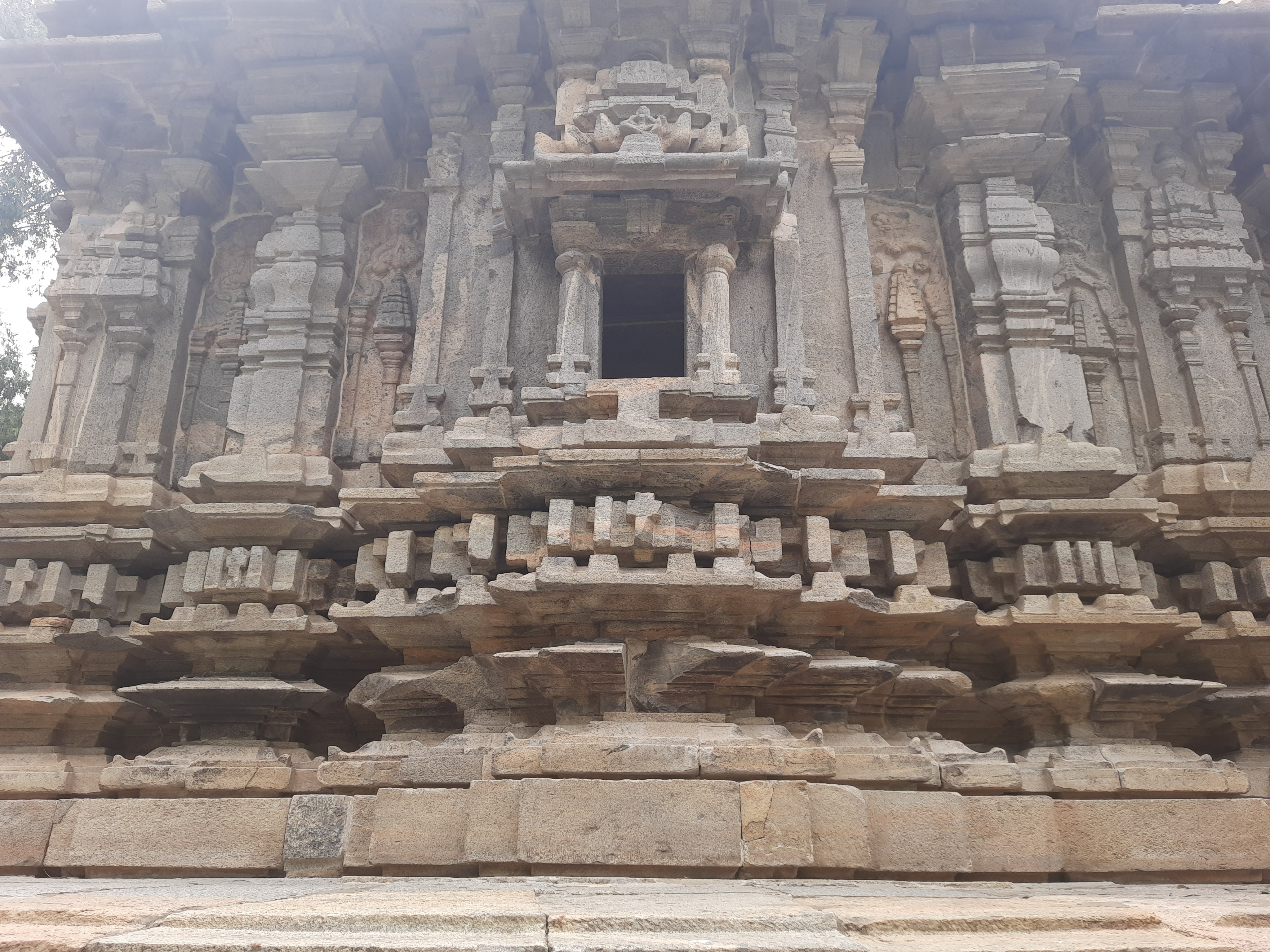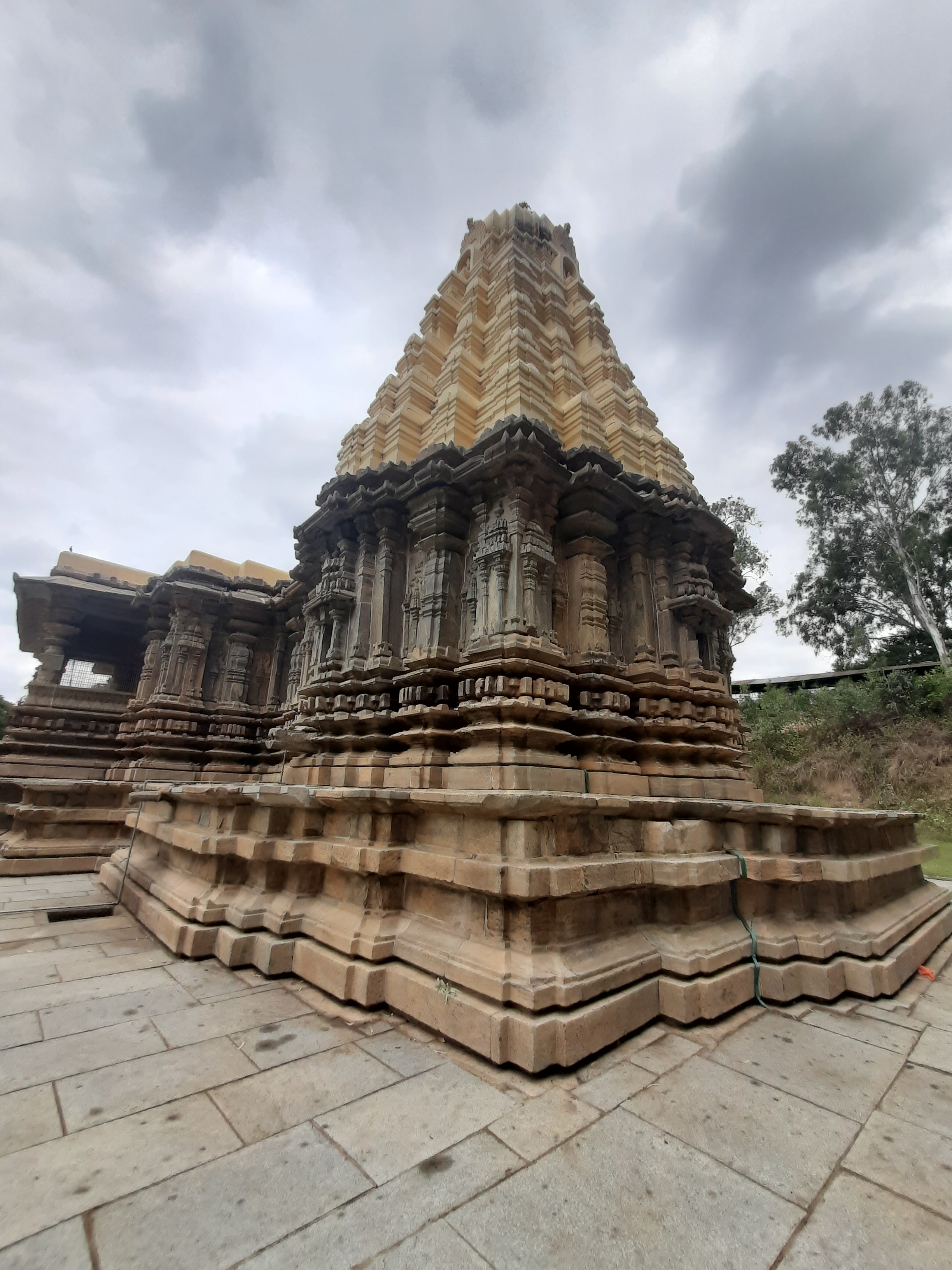 |
| Kirtinarayana Temple, excavated from under the sands in 1912 |
The Kirtinarayana temple is built in Hoysala style using granite. An inscription dates it to 1117 CE under Hoysala emperor Vishnuvardhana. Talakadu used to be the capital of the Gangas.
 |
| Jagati |
Tradition says Kirtinarayana temple is one of five Vaishnava shrines founded by Vishnuvardhana after conquering Gangavadi. The temple faces east and stands on around 4 feet high upapitha platform. The vimana above features a large sabhamandapa or rangamandapa with open spaces
 |
| Jagati |
 The jagati closely follows the temple plan, providing a 6-8 feet space for pradakshina. Its moldings include vapra plinth, padma, kandhara with patta band and the kapotapali complex. Coaxial with the rangamandapa nave are three broad stairways with hastihasta banisters.
The jagati closely follows the temple plan, providing a 6-8 feet space for pradakshina. Its moldings include vapra plinth, padma, kandhara with patta band and the kapotapali complex. Coaxial with the rangamandapa nave are three broad stairways with hastihasta banisters. |
| Adhistana |
The vimana has bhadra, pratiratha, karna divisions. The adhisthana is prettily molded but unlike most hoysala temples lacks any figural carvings. Karna walls have niches with dravidakutas. Pratirathas have brahmakanta-bhadraka wall pilasters. Central niches have dravidakutas
 |
| Kakshasana |
The hall's rear walls resemble a gudhamandapa. Rangamandapa starts at the western end of its side porches (parsvacatuskis) with three porches at bhadra points. Along the rangamandapa periphery runs a kakshasana with dry floral motifs
 |
| Srikara Pillar |
 |
| Paada |
The outer walls lack figural carvings of vyala busts or makara heads but have elegantly molded adhisthanas. The decorative treatment of the walls and niches, including the kutastambhas in the salilantaras and toranas in shallow relief
 |
| Mahadwara |
In the Navaranga of the temple, 3 Vijayanagara period images of Alvars sit in padmasana. Nammalvar with a book, Pillai Lokacharya with hands in yoga mudra and Vedanta Desikar. A Lakshmi image is seated in padmasana with abhaya and padma mudra. I didn't photograph the interior
The murthi of Kirtinarayana in the garbhagriha stands on a Garuda peeta, about 10 feet tall. He is depicted in samabhanga posture, holding a shankha, padma, gada, and chakra in four hands. The prabhavali features the ten avataras of Vishnu. Didn't photograph the murthi
The sukhanasi doorway is a later addition to the temple. It features a stucco image of Anantashayana above the lintel. Inside the sukhanasi are two large oil bowls and images of Tirumangai Alvar and seated Narasimha. Didn't photograph it.
The Kirtinarayana temple at Talkaḍu stands as a remarkable testament to the architectural ingenuity and artistic sophistication of early Hoysala craftsmanship. Despite the challenges posed by its use of granite, the temple's design reflects a profound understanding of spatial dynamics and aesthetic proportions. From its grand vimana and intricately adorned rangamantapa to its unique columnar forms and detailed ceiling decorations, the temple embodies the transitional nature of Hoysala architecture.







